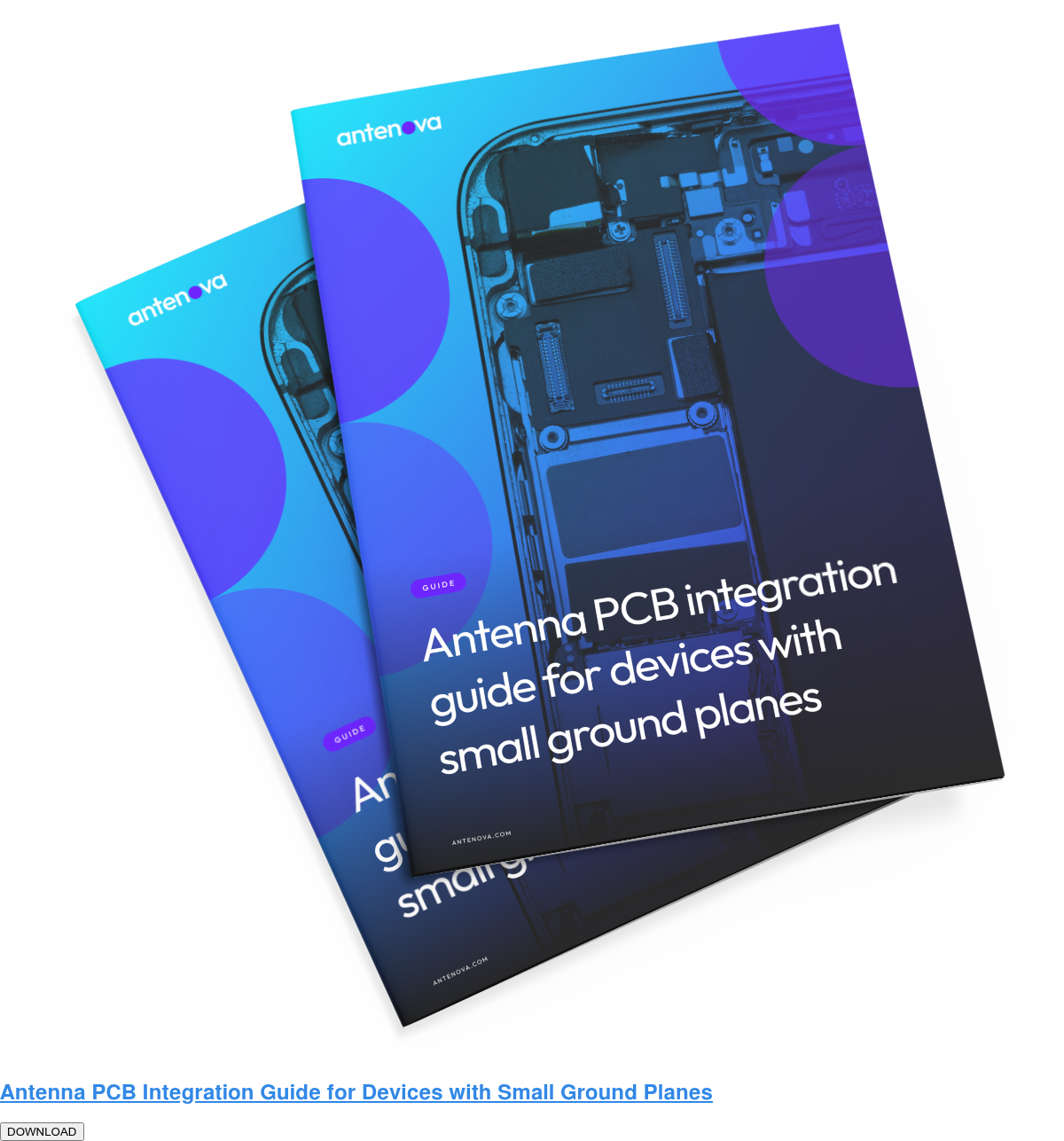With the constant drive to make devices smaller, smarter and more feature-rich, device engineers face a constant and major challenge. They need to ensure that wireless performance doesn’t suffer as devices shrink.
From IoT sensors and wearables to medical implantables and next-generation consumer electronics, the demand for compact wireless devices is always growing at a rapid pace. But miniaturisation brings unique challenges to antenna design, and designers need to be aware of the challenges that can compromise efficiency if not addressed strategically.
The impact of miniaturisation on antenna performance
Antennas rely on their environment to perform efficiently. In traditional devices with ample PCB space and generous ground planes, achieving high efficiency and stable bandwidth is more straightforward. Miniaturisation disrupts this balance in three main ways.
- Reduced ground plane size: Antennas rely on the device’s ground plane to function as part of the radiating structure. Shrinking PCB space can limit the effective radiation area, leading to reduced efficiency, narrower bandwidth and even complete inoperability if it is too small.
- Detuning from nearby components: As devices become more densely packed, antennas are increasingly surrounded by disruptive components like batteries and metallic structures. These elements can interfere with the radiated fields, causing detuning and unpredictable performance. For instance, a wearable Bluetooth device operating at 2.4 GHz may suffer most of its efficiency loss if placed next to a battery without proper keep-out zones.
- Limited space for antenna placement: The reduced physical volume of modern devices restricts where antennas can be placed, often forcing compromises in orientation and isolation from noise sources.
Why efficiency matters more in small devices
The smaller the device, the more important every milliwatt is. For applications like medical wearables or IIoT sensors operating on tiny batteries, inefficiency can be a direct product of failure. Wireless efficiency directly impacts battery life as poorly performing antennas force radios to transmit at higher power to maintain connectivity, draining batteries faster. On top of this low efficiency can lead to dropped packets and higher retransmissions to negatively impact data reliability. Devices that fail to radiate efficiently also may struggle to meet certification requirements for Total Radiated Power (TRP) and Total Isotropic Sensitivity (TIS).
Strategies for preserving wireless performance during miniaturisation
Maintaining wireless efficiency during device miniaturisation might sound like a challenge, but it is not impossible. It requires careful design decisions early in antenna integration development.
- Maximising available ground plane: Even small gains in PCB ground area can dramatically improve embedded antenna efficiency. Techniques like using ground extensions can help simulate a larger ground plane within the device footprint.
- Managing detuning from nearby components: Strategic component placement and maintaining keep-out zones for the antenna are essential. RF simulation and early-stage prototyping can identify interference issues before they become costly to fix.
- Testing early and often: Miniaturised devices leave little room for error. Conducting Over-The-Air (OTA) testing throughout the design cycle can ensure that the final device meets efficiency targets under realistic conditions.
- Choosing compact, high-efficiency antennas: Embedded antennas like surface-mount (SMD) and flexible printed (FPC) types are engineered for constrained layouts. High-efficiency models ensure that even small devices radiate effectively without excessive power loss.
- Partnering with antenna experts: Leveraging pre-tested, integration-friendly antenna solutions can shorten design cycles and reduce the risk of underperforming prototypes.
Miniaturisation doesn’t have to mean compromise
With the continual push towards ever-smaller devices, the challenge of preserving wireless efficiency will only increase. By approaching antenna selection and integration as a core part of product design rather than an afterthought, engineers can achieve the best of both worlds with compact devices that perform reliably in the real world.
Antenova specialises in delivering high-efficiency, compact antennas designed for the constraints of modern device miniaturisation. Whether you are developing a wearable, a medical device or an ultra-compact IoT sensor, our solutions are engineered to maintain wireless performance without compromise.
Take a look at our full range of products to help find the best fit for your device. To delve deeper into the best practices when integrating antennas for different specifications, download our guide below




